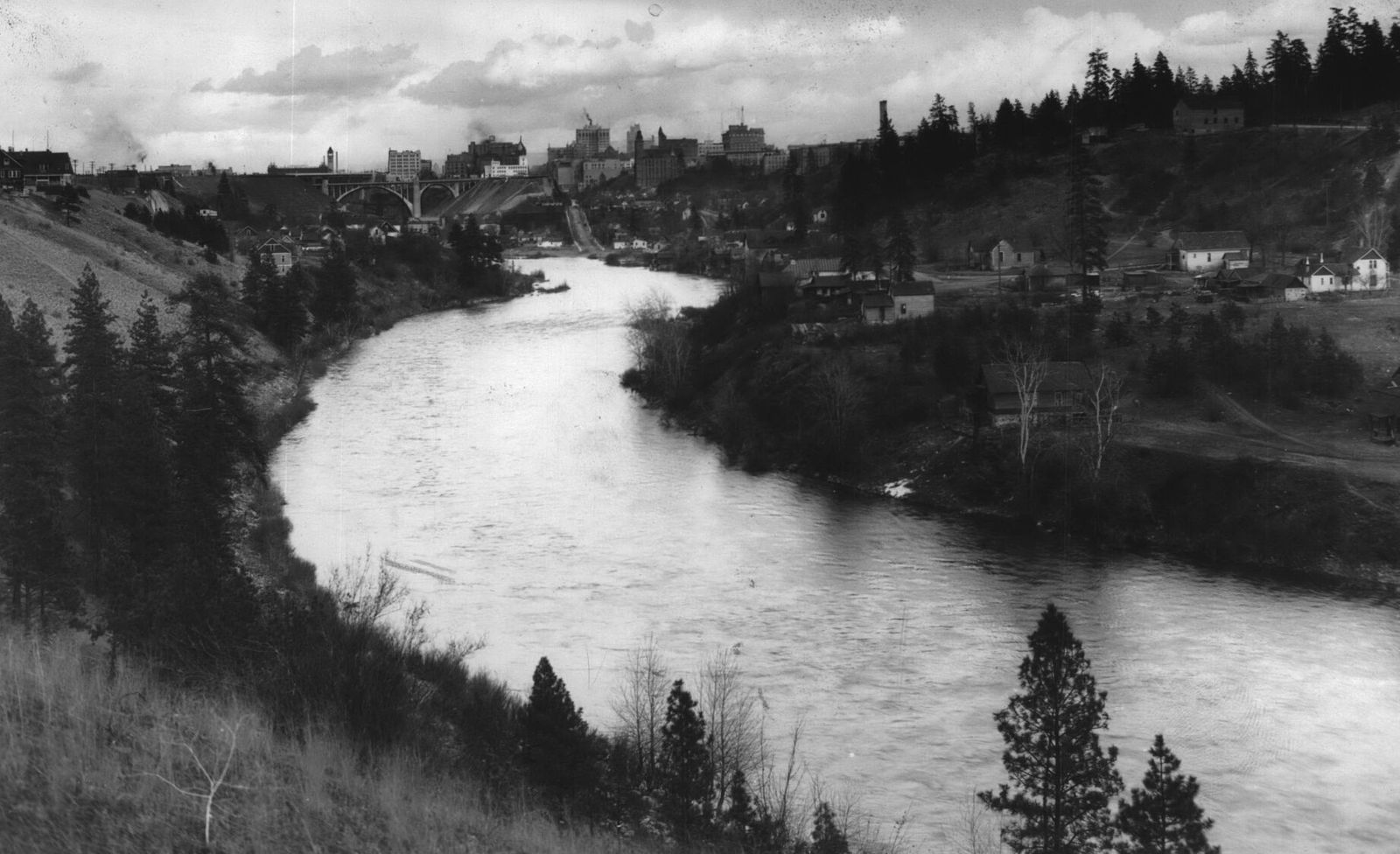
Then and Now: Peaceful Valley
Spokane's funky riverside neighborhood went from being a seasonal Native fishing village to a refuge for laborers, new immigrants, and transients to a funky counter-culture haven.
Section:Then & Now
Then and Now: Peaceful Valley
Peaceful Valley, the Spokane neighborhood on the south side of the river west of downtown Spokane, was once a seasonal fishing village used every summer by Indigenous tribes who had fished at the site for centuries. Before hydroelectric dams blocked anadromous fish from migrating to the Pacific Ocean, the south bank riverfront would fill with temporary villages where Natives from around the Northwest and southern Canada caught salmon.
In Jim Kershner’s history of Peaceful Valley posted at historylink.org, he points out that the tradition died out after Spokane River hydroelectric dams cut off Columbia River salmon from reaching Spokane. The first three dams were the Nine Mile Dam, Little Falls Dam, and Long Lake Dam.
As white settlers built homes there, locals nicknamed it Poverty Flats because most of the residents were laborers and transients. Anyone living there had to trudge up Main Avenue to the city business district to get to work. The street car lines, an important people mover in old Spokane, were never extended down the hill.
Some settlers built their own small houses which mirrored the shanty town on the north bank.
Before the two-room Cowley School opened there in 1917, children had to climb a steep staircase up to the level of West Riverside to get to a school in Browne’s Addition.
One impediment to development was that some of the land belonged to the Northern Pacific Railroad. In the 1890s, developer C.F. Clough purchased railroad land and sold lots there after renaming the neighborhood Peaceful Valley. It was the name of an 1897 popular stage play.
There were a few large businesses in Peaceful Valley, including the Spokane Casket Company, which lasted almost 100 years.
Among the early residents were new immigrants who came to work in blue-collar industries like mining, construction and logging. The largest group may have been the Finns, whose social hall served as a hub of the neighborhood.
Glover Field, a 3-acre sports field, and a recreation center built in 1950 were also hubs of activity in the community. The field held dozens of tipis during the 1925 and 1926 American Indian Congress gatherings.
Through the 1960s and 1970s, Peaceful Valley got a reputation as a counter-culture haven based on cheap rents, quirky old houses and the artistic cross -section of people that lived there.
Share on Social Media

